I’ll be honest: training has been going really well and I had been eyeing the Chuckanut 50K course record.
But the weather had other plans.
One of the most infuriarting and simulatenosuly rewarding parts of trail running is that every athlete in a given race is at the mercy of variables beyond their control, weather and subsequent trail conditions playing the biggest role. When I ran Chuckanut 50K last year, the weather was pretty ideal: cold at the start, sure, but the ground was dry, the trails were compact, and temperatures reached 60°F and sunny at the finish. In contrast, this year’s race started at 38°F and raining and didn’t waver. While these temperatures weren’t terrible on the lower sections of the course, the higher elevation of the Chuckanuts, specifically the more exposed Ridge and Chinscraper parts of the race, made conditions borderline dangerous. And then there was the mud.
I’m getting ahead of myself, though. Let me back up to why I wanted to run Chuckanut 50K a second time, and what Bellingham as a community means to me.
Nick and I made the short journey down to Bellingham (a mere 45 minute drive from our new home in Langley, BC, in comparison to last year when we drove 16 hours to get to the race) and spent Friday visiting our favourite Bellingham and Fairhaven locations—the Bellingham Food Co-op, Village Books and Fairhaven Runners. I always enjoy coming to Bellingham because of the layers of history the area holds for me—I have memories of wandering around Village Books as a teenager with my mom and never leaving with less than three books; of my time at Fairhaven College and Western Washington University as a naive seventeen-year-old—so young that I still had to get permission from my parents in order to go on college field trips; of moving back to Bellingham with Nick, shortly after we got married and immediately following his heart surgery—I lost track of the number of times we went to the local hospital as he struggled to get diagnosed with pericarditis following the surgery. Then there’s the community and friends we have built over the years. Needless to say, Bellingham is a meaningful place for me and being able to run a race here always feels special.
My plan for this year’s race was to go out harder. I have a tendency to play conservative at the beginning of races, but as times get faster and faster, this strategy may mean I don’t have enough runway at the end of races to pass competitors. As soon as we started, I found myself in a tight lead pack with Sarah Biehl and Claire Devoe (last year’s Chuckanut winner.) We clicked off the intial miles at 6:17 and 6:28, up to 7:19 through Arroyo Park with its twisting climbs, and then back down to 6:27, 6:22, 6:36 and 6:34 to mile 7. For context, last year I covered the initial 5.7 mile segment (with roughly 1000 feet of climbing) in 39 minutes, 27 seconds; this year, I was about a minute and half faster, in 37 minutes, 55 seconds. This is the difference between a 6:53 min/mile average pace and a 6:37 min/mile average pace. In other words, this front pack wasn’t messing around.
I had started with a Goretex rain jacket which I had been torn about wearing. On one hand, I wanted to feel fast and light but Race Director Krissy Moehl had sent a last minute update strongly encouraging runners to bring gloves and a shell due to the forecasted conditions. I decided to risk overheating and wear it, just in case.
At aid station one, I heard my name and saw Steve Roguski, the previous owner of Fairhaven Runners, who had graciously agreed to crew Nick and I during the race. Within three seconds he handed me four gels (one 90g Precision gel and four 30g gels) and a refilled bottle, then I was gone. Aid stations are not what they were when I first started running ultras—there used to be time to check in with your crew and purvey the aid station for any foods that look appealing. Now it’s more akin to a pit stop with the goal to get in and out as fast as possible. Every second counts.
My hands had started to become very cold despite my gloves, and I struggled to stuff the gels into the pockets of my shorts as I took off after Claire and Sarah. Stopping to pick up a gel that I dropped was enough to create some distance between us, and as we headed up Fragrance Lake Trail, the first climb of the race, I fell back a little.
I also fell back a little, because I was slipping and it was suddenly clear that this would be a very muddy race.
Overnight rain had turned what are normally relatively smooth trails into slip n’ slides, even on shallower grades. As we wound our way up Fragrance Lake, I felt myself sliding back. Puddles stretched across the path, but attempting to jump over or go around them felt riskier, so straight through the cold, brown water we went. My feet were soaked and my hands were cold, but at least I was working hard uphill and that was keeping my core warm.
I caught up to Sarah and Claire as the trail topped out at Fragrance Lake but lost sight of them as soon as we hit Two Dollar. That was because of the mud. “Oh boy,” I said to myself as the first descent looked more like clay then dirt. I needed to run more conservatively than last year because of it. Any uphill grade was tolerable, and longer, flatter sections were manageable, but the descents that switchbacked were dangerous—I envisioned myself flying straight off the side of the trail, so I relied on trees and shrubs to slow myself down at each turn, grabbing hold of them as a way to stay upright. Sarah and Claire had put time on me here, but I knew that I needed to stay uninjured if I stood any chance of catching them at all.
As soon as I hit Cleator Road, the nearly 3-mile fireroad climb, I took off, hoping to reel Sarah and Claire back in. I could see Sarah in the distance but Claire was gone. I took advantage of not having to worry about mud or roots to fuel here and used my teeth to open a 90g gel—my hands were utterly useless at this point.
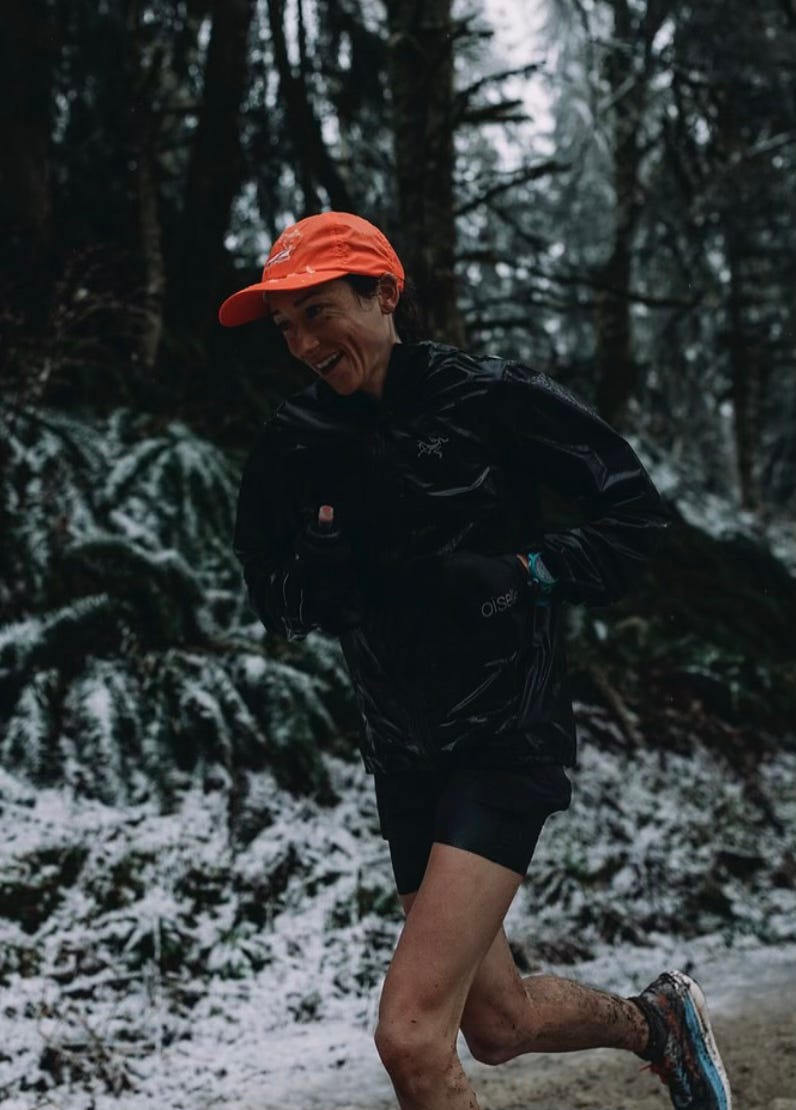
From the top of Cleator, the route leads directly onto the Ridge, a notoriously technical section of the course. The mud wasn’t as terrible as I expected and I moved decently throughout this section. What was difficult, however, was the sleet and wind, and the slower nature of this section meant I wasn’t generating nearly as much body heat. I began to shiver, even through the effort.
At mile 15 or so, I caught up to Sarah. We briefly spoke about how much we were both shivering, and I tried to assure her that she’d be able to move faster once the Ridge section ended. I took every advantage to run what I could here, even if the movement was plyometric and spiked my heartrate, and by the time I could hear the shouts of volunteers below, I knew I was almost back down to Lost Lake Trail.
I raged this section—or at least it felt like it. I didn’t feel particularly energetic, but I knew that moving faster would equate to staying warmer so I pushed particularly hard on the climbs. I felt less in a competition against the other women on the course and more against nature itself, my goal being to stay safe and finish the race. A course record day had long since been forgotten due to the terrible conditions and whether or not I could improve upon my time last year wasn’t ever a thought. I just wanted to get out of the cold.

Several sections that could have been downright miserable were bouyed by the cheer of volunteers and spectators—while I was too concentrated to look up at the various faces, I did see Corrine Malcolm just about everywhere on the course. I felt just a little bit of extra energy each time, and that translated to me being able to push harder and stay warmer.
By far the crux of the race was Chinscraper, simply because it’s the steepest, slowest and most exposed section. The bottom parts of the route are usually runnable, but the mud made any traction minimal. I could see marks where previous runners had slipped and fallen, and I caught myself once or twice before falling face first into the mud. I tried to get around this by sticking to the very edges of the trail, but that didn’t prove much faster as I was tripping over branches and roots. I shivered my way up this entire climb, my teeth chattering throughout. I just needed to get back to the Interurban.
When I finally, finally, crested the top, I was relieved to be able to open up my stride and push hard on the descent going down Cleator. Much to my chagrin, the fireroad was covered in a slushy mess of soft snow and moving fast, or at least as fast as I know I can, was out of the question.
As I made the sharp left onto the Fragrance Lake Road turnoff, I could see a few runners ahead of me. I had been passing a few people but knew that the final third of the race was often where people’s races fell apart. This was even more apparent on a cold year like today.
The final descent down Fragrance Lake trail was disastrous. In all of the times I’ve run that section of trail, I’ve never moved so slow. I caught myself several times and was forced to make a wide berth at each switchback. If I ran too close to the outer edge of the trail, I was afraid I’d slip off the edge; if I ran too close to the center, I’d hit the worst parts of the mud. I assumed that Claire was far ahead of me as I still hadn’t seen her, but I also hadn’t seen Sarah behind me so maybe I was sitting in a good position. The main thought in my head was getting back to the Interurban so I could run fast and unencumbered by mud. Hopefully that would get me warmed up.
At the final aid station, Steve once again waved me down and handed me my last bottle and two gels. At the last second I tossed one back, overriding the prudent idea to fuel right until the end. That would cost me in the final mile, but until then I had six miles left to cover and all I could think about was getting out of the cold.
I could see a few men in the distance, so took in one last caffeinated gel and decided I’d use the other runners as motivation to run as fast as I could into the finish. I wasn’t moving as fast as I wanted, but I was still hitting a few sub-7 minute miles and knew I wouldn’t be leaving anything out there, at least given the conditions.
At mile 26, I suddenly spotted Claire, the first time I’d seen her for several hours. She was walking back in the opposite direction and after a quick exchange to make sure she was okay, I gathered that her race was unfortunately ending. I’d come to find out later that Sarah Biehl along with many, many others had dropped due to hypothermia-related symptoms. Several runners complained about becoming lightheaded and dizzy due to the cold.
On the final climb through Fairhaven Park, my legs started locking up and I felt like my body was buzzing—maybe from the effort, maybe from the prolonged cold? And then I could see the end of the Hundred Acre Woods and there was the finish and I was done!
I won in 4:22, eight minutes slower than my second-place time last year. I’d argue that I was fitter this year and that the effort was higher for the day, too, showing just how bad the conditions were out there.
There were probably a dozen women who could have won this race, so what worked in my favor? For one, my jacket. While I was uncomfortably cold and miserable the entire race, I was staying dry enough, at least under my jacket. This meant I had less wasted energy going toward keeping myself warm.
I also have eleven years of trail and ultrarunning experience at this point and can look back to a handful of races that had very poor weather conditions—Zion 100 (horrendous rain during the latter half with clay-like mud that turned everyone’s shoes into ten-pound weights); HURT 100 (I DNFed at mile 70, but it had rained for most of the race and the technical trails were made muchmore slick); Orcas 100 (snow and rain the entire 24 hours of the race). I can list ten times as many adventure runs with Nick that were equally arduous. These experiences have given me a reference point when things become challenging.
I’m not advocating that you put yourself in dangerous conditions or push through unsafe symptoms. I have several races where I’ve chosen to drop because I felt it was unwise to continue. But, as long as you’re prepared and know the parameters of what you can withstand, then having past experiences to pull from can be tremendously helpful.
This was my first race as an Altra sponsored athlete (which I’ll be sharing more about in another post!) so thank you to Altra for the race kit and shoes that kept be moving comfortably and quickly throughout. Thank you to Steve, Genevie, Sean, and Fairhaven Runners friends or taking care of me post-race, and thank you to Krissy & crew for putting on such a great event. I feel grateful to have entered the sport at a time where local, grassroots races were all that was available and that I’ve had the chance to run so many classics. If you enjoy trail running, I hope you get the opportunity to run Chuckanut 50K one day, too.
Nick also ran the race and I spent a good portion of time thinking about him and hoping he was faring okay. He finished about fifteen minutes back and had spent much of the race sliding down the trail—but I’ll leave the telling of his race to him. Subscribe to his brand-new Substack here!
So what’s next? Recovering from this race, then gearing up for Gorge Waterfalls 100K. This year’s race is serving as the Team USA Long-Trail Selection for the World Mountain and Trail Running Championships, which I can’t qualify for since I’ll be competing as a Team Canada athlete. That said, I’ll be looking to put together a solid 100K race, something I feel I haven’t quite pulled off yet. I’m also excited to check out new-to-me trails with a hopeful side quest of foraging for morel mushrooms before and after the race!

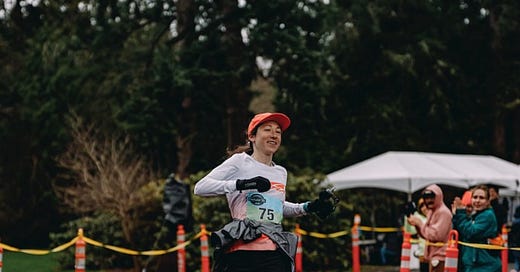


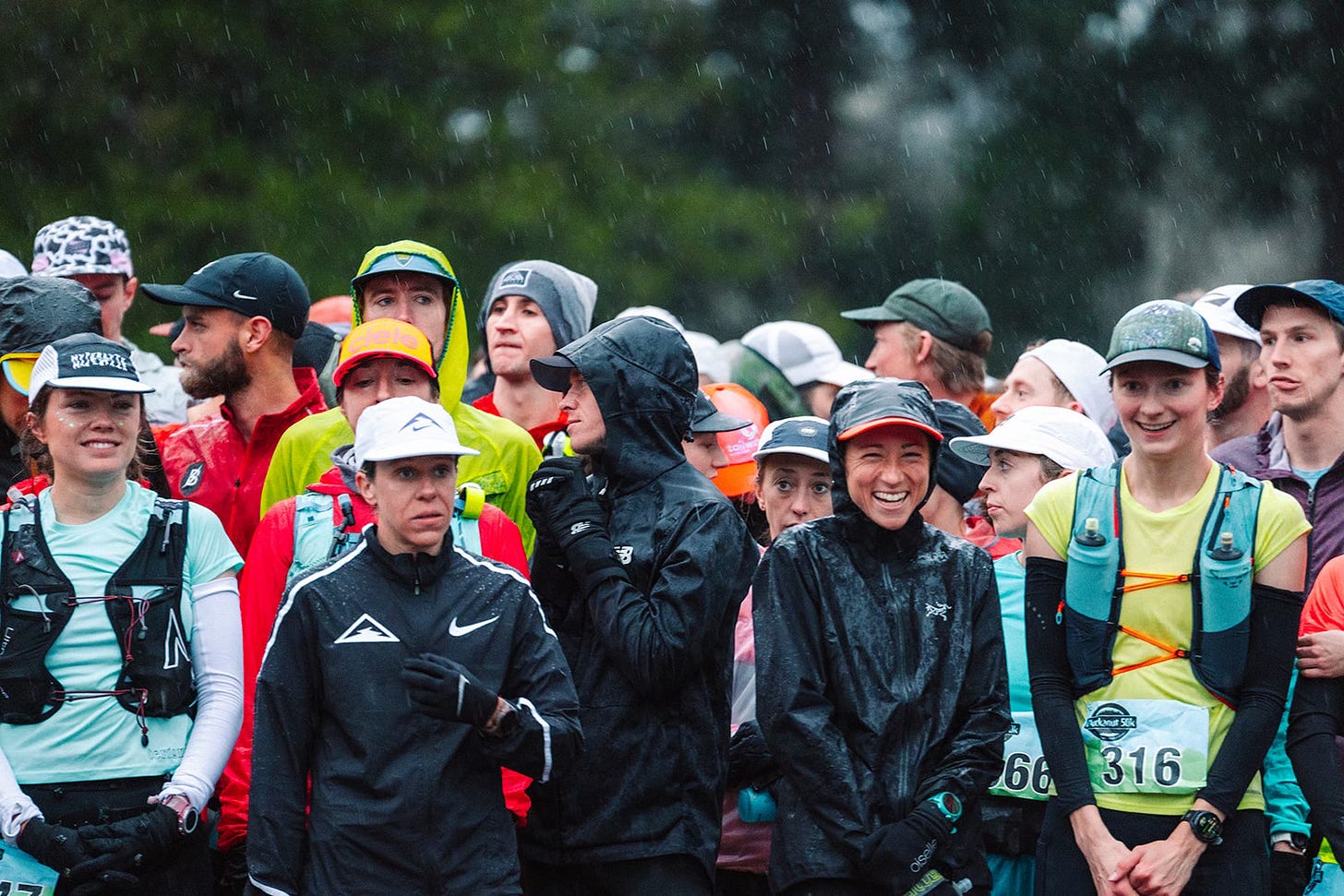
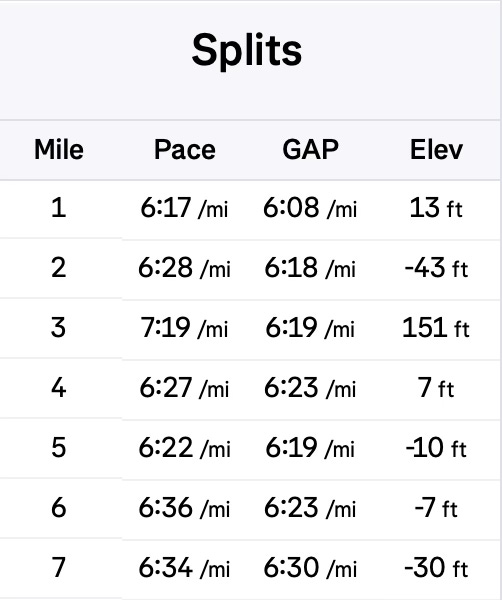

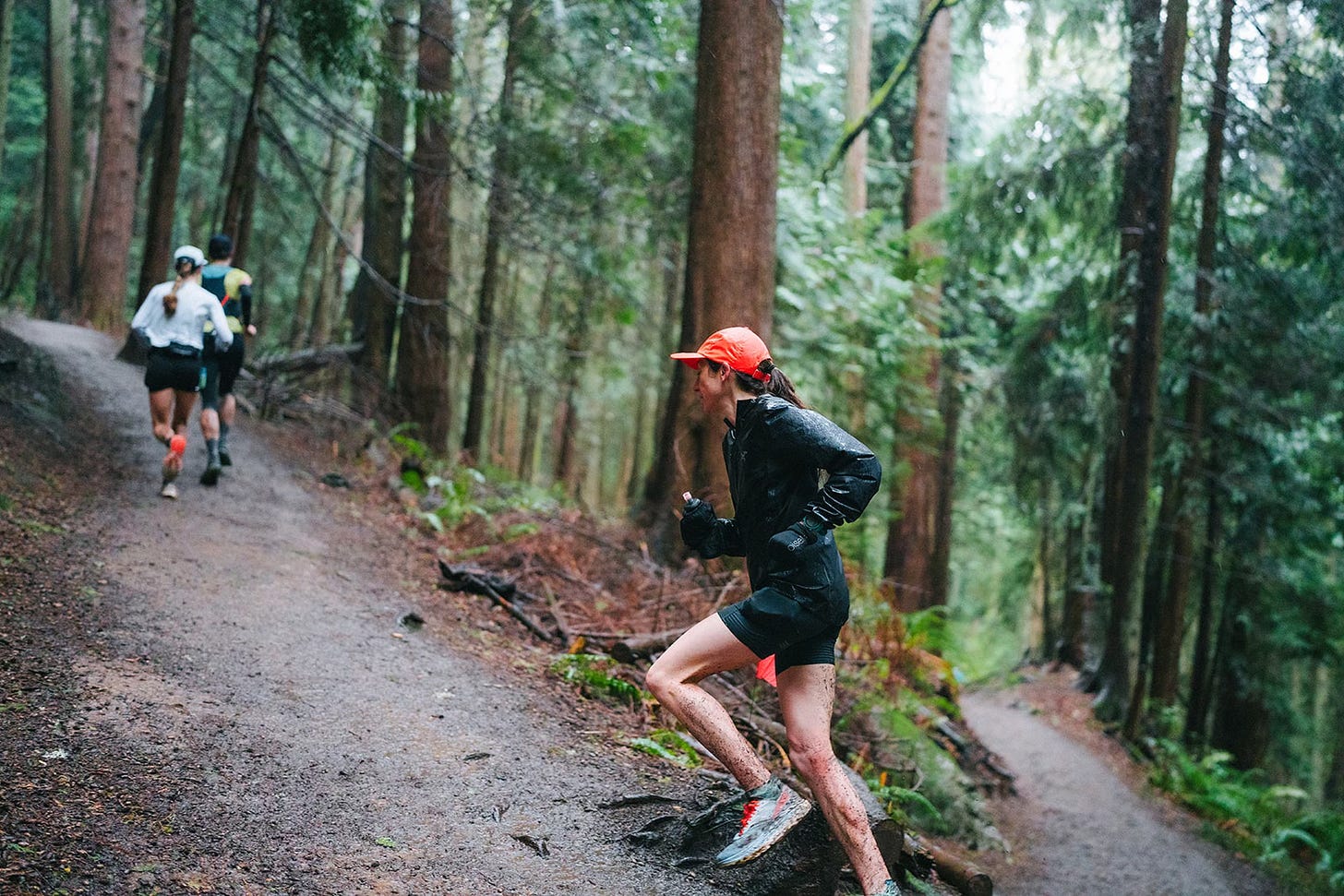
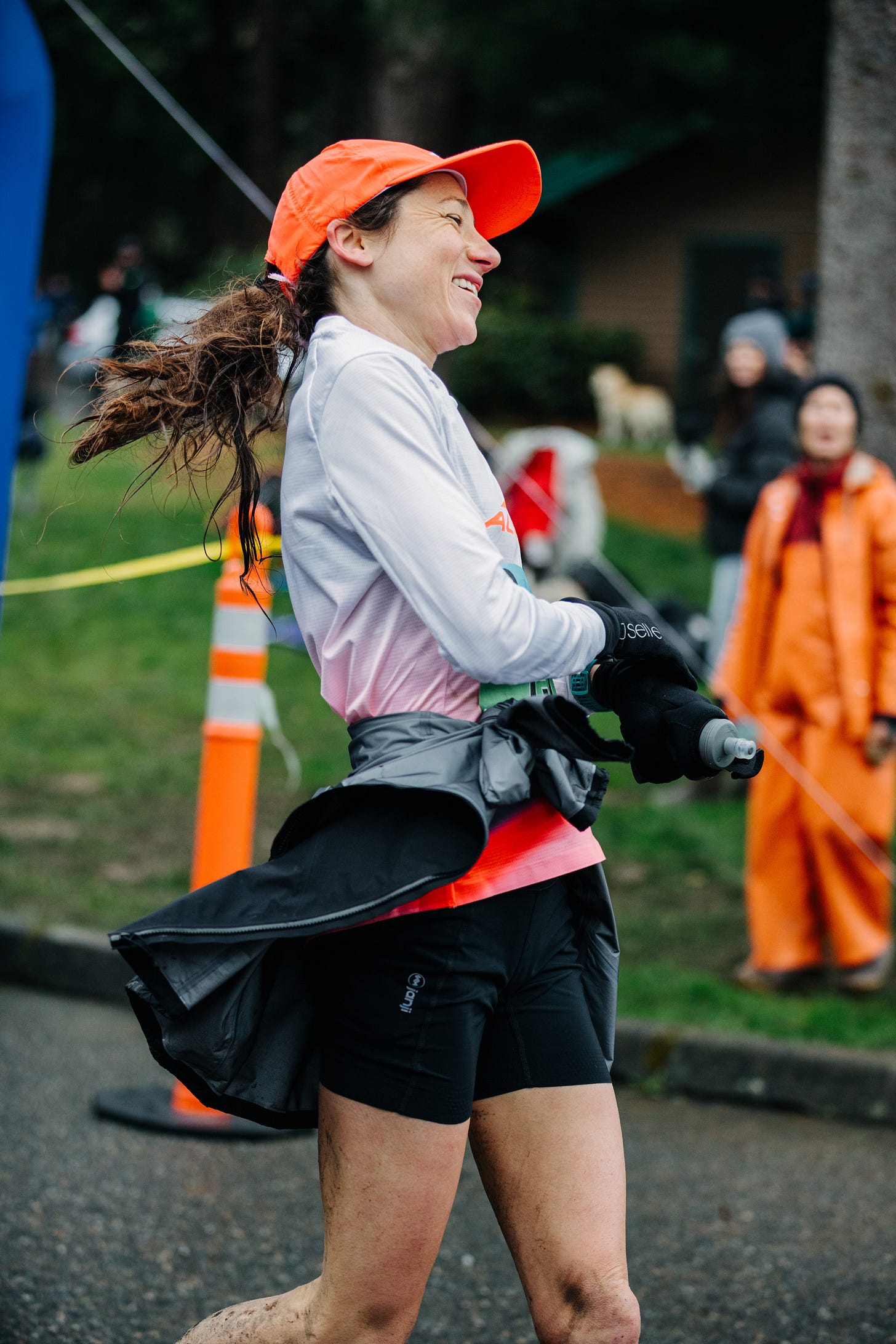
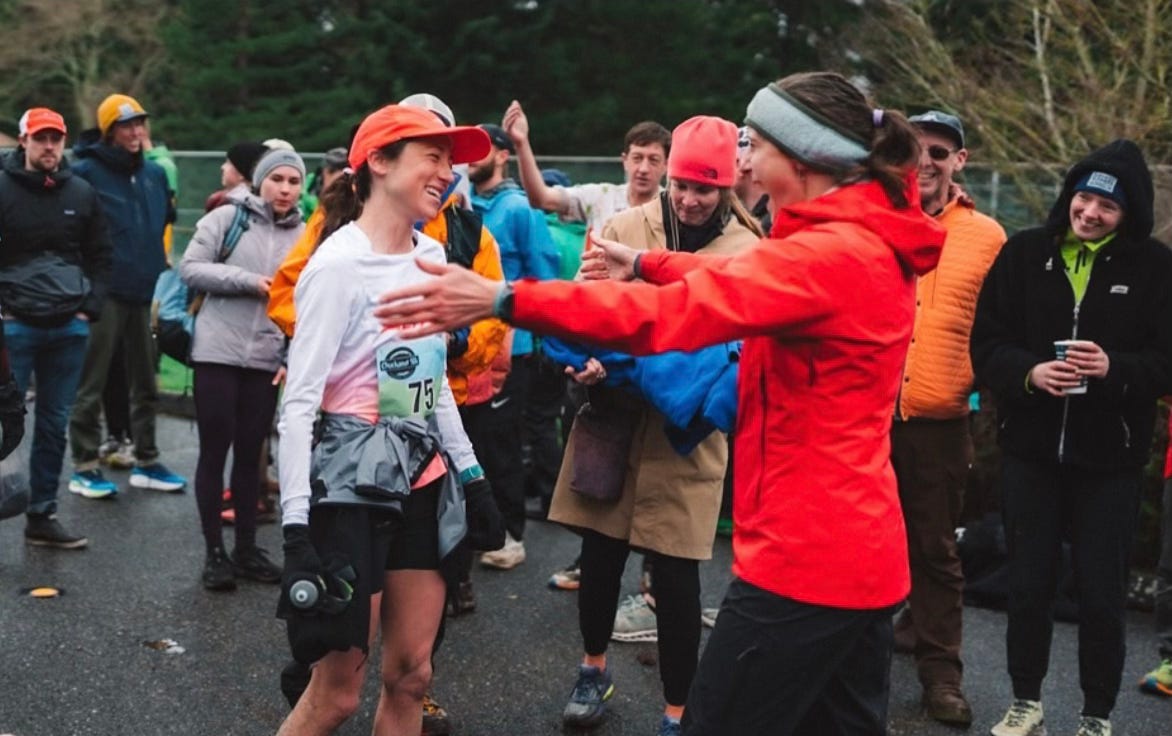
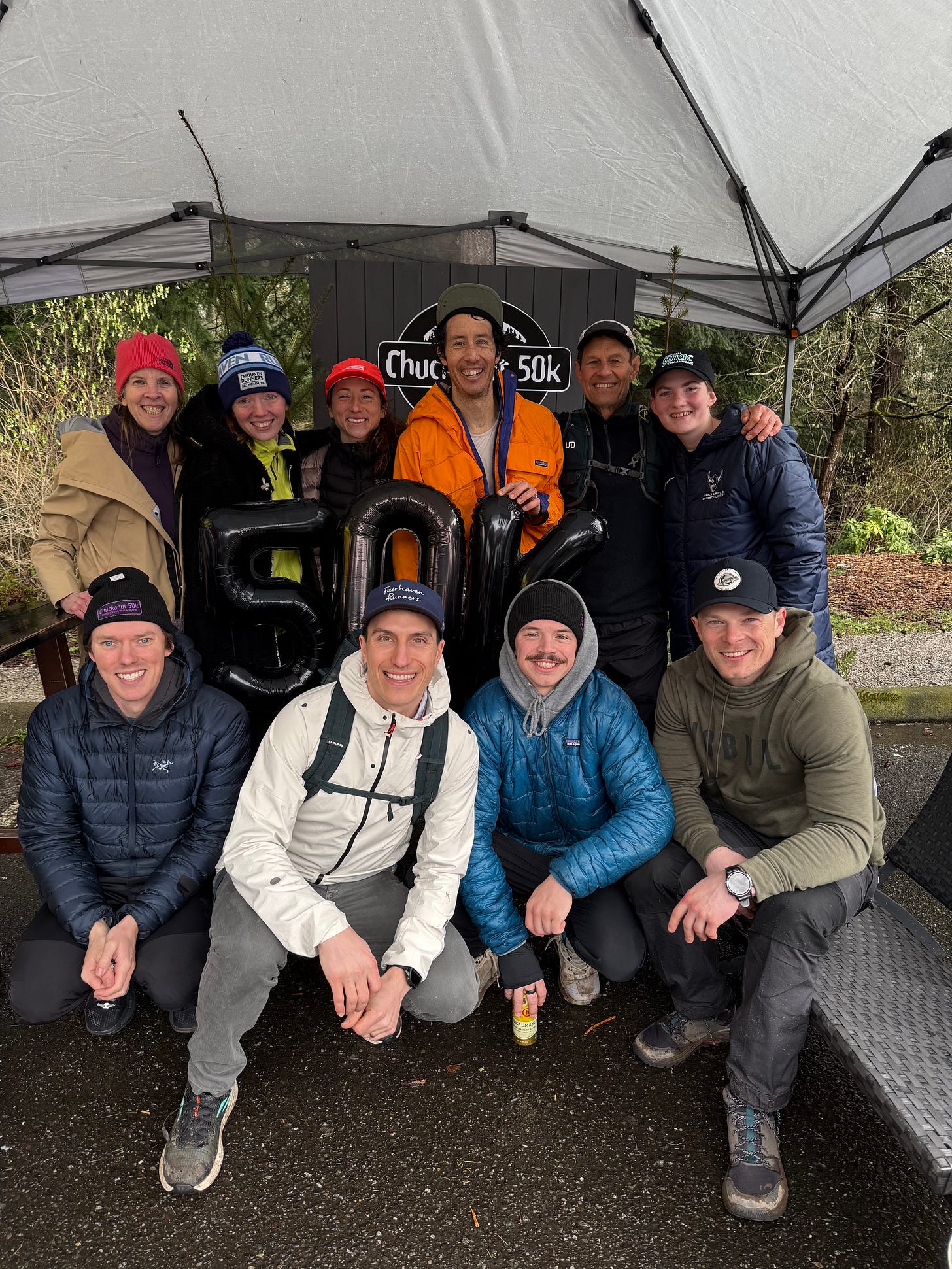
Congratulations, and way to persevere through the wild conditions! Great recap. I'm curious about the jacket you chose--is it the Norvan?
OMG I ♥️ that race name 😂